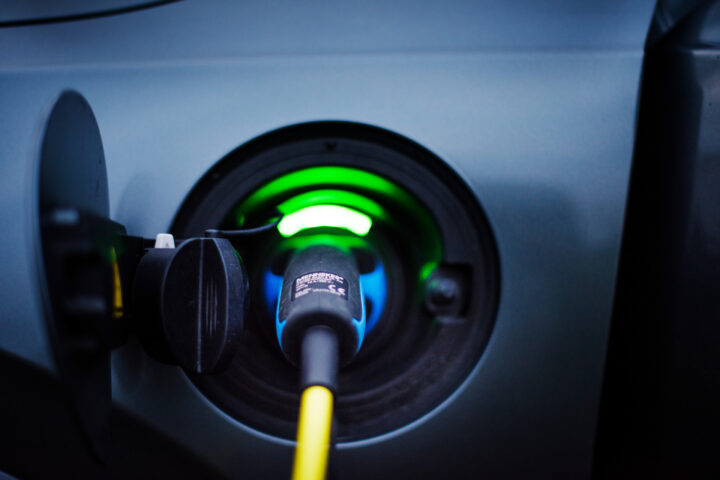Adoption of Cleantech in developing countries is equally important in the race to a fossil-free economy. As developed economies accelerate their post-pandemic recovery while demanding more energy and resources, developing countries will follow the same trend. However, these countries are facing constraints regarding access to finance for the adoption of Climate Technologies.
Even if there is a growing pool of investors eager to invest in Cleantech projects in developing countries, most of getting investments remain concentrated in the developed countries. This trend is creating an imbalance in the run towards the Net Zero goals and fulfilling the Paris Agreement.
Developing countries are also pushing hard to accelerate the recovery, but the only alternative they have is to go back into a fossil-based economy without incentives to transit towards sustainable development. This means going back to the same level of global CO2 emissions we had before the pandemic is not optimal anymore. There are opportunities to change the pattern since the cost of clean technologies is falling in many sectors, but we have to act fast.
Exploring the barriers to adoption
According to the UNFCC, the barriers in obtaining financing for Cleantech projects in developing countries are in finding low-cost capital, low availability of public investing guarantees, and poor credit scoring. This creates uncertainties that are challenging to handle for financial markets, but these barriers can be overcome with the right strategies and expertise.
There are barriers determined by the characteristics of the clean technology to be deployed. The commercialization stages, the investors available, and the market context. Clean technologies require testing and demonstration and adaptation to the new market. Public support is necessary until these technologies are mature and can compete with similar fossil-based technologies. It is a process of deploying innovation overcoming challenges.
Public entities play an important role to support the process to facilitate access to early-stage risk capital. Addressing the financing issues requires a deep understanding of the specific risks, capacity constraints, and finance gaps that prevent investments.
Takeaways for cleantech companies
When it comes to exports of Cleantech. If your company is waiting for the perfect storm, you´ll be waiting too long. There is no silver bullet for blended financial instruments that can be structured for the endeavour of exporting, financing, and sharing risk between stakeholders, but successful financial models and best practices can be replicated and scale up with some adaptations, including a broader range of risk mitigation that could be evaluated by international aggregators and Climate technology experts. Here are some recommendations for successful Cleantech exports:
- Both IVL and Tillväxtverket recommend getting good advice from international trade experts as well using trusted financing mechanisms like EKN.
- Network with large Swedish corporates that have already done business in challenging regions and developing countries.
- You can also use trusted industry-leading sales partners in the country as representatives for your products if these are not complex or comprehensive systemic solutions.
- Hire people with the right expertise that lives in Sweden and have excellent knowledge of, business culture, languages, and environments in the countries you want to enter and let them champion the process.
- Search for opportunities to offer your potential clients gap financing and look for other business models considering different models of financial leasing in cooperation with local banks, have an open discussion to lead the customer to find a financial model that works for both parties that minimizes lead time for delivery of the solution.
Recommendations for the financial stakeholders
The financial stakeholders are equally important in Cleantech adoption for developing countries, Public finance is already on the move and there will be initiatives coming after the COP 26 to fund Climate Technology funds for projects in developing and underdeveloped countries facing challenges in both mitigation and adaptation to Climate Change. These aspects should be considered to enable long term financing of Cleantech projects:
- Multilateral Development Banks, must push the agenda for in scaling Climate Finance to meet the Paris Agreement goals.
- Mobilize and work with banks in developing countries to build institutional capacity to evaluate innovative Cleantech projects for long-term project funding.
- Find innovative business models and blended financial instruments to share risk for financing gaps, especially in adaptation projects.
- Improve overall collaboration with public sector stakeholders to simplify processes and frameworks to finance Cleantech and Climate Technology projects.
Recommendations for public stakeholders and adopters
If you are a pollical stakeholder in a developing country, it is very urgent to focus on creating incentives and the right legal frameworks to facilitate Cleantech adoption, there are some aspects to consider:
- Create more ambitious roadmaps to implement Climate Technology to meet the Sustainable Development Goals while creating new job opportunities.
- Partner with experts from universities and R&D organizations and let them drive the creation of an environmental transition roadmap and manage the projects. Especially if you are a political stakeholder dare to delegate to the environmental experts.
- Listen to Climate champions from the civil society using the NDC mechanisms to provide input on the plans for Climate technology implementations.
- Handle the processes with transparency and avoid politicization and polarization in key areas to facilitate adoption among the beneficiaries especially when it comes to climate change adaptation projects.
- Actively seek grants and blended finance opportunities to fund Climate adaptation and mitigation projects. Initiatives like the Green Climate Fund are already funding projects in developing countries.
Last but not least
As a Cleantech or environmental services company exporting for the first time from Sweden, the global marketplace can be hard to navigate. At Swedish Cleantech we have experts in specific markets in developing countries you can rely on.
If you are sourcing Climate Technologies to solve environmental problems in Latin America, Asia, Africa, and India. You can get assistance from high-ranked environmental to do complex technology screening pre-feasibility studies or just find providers of specific solutions in Sweden.
Many Cleantech projects need gap financing only in the startup phase and will become self-sustaining and bankable for investors. Both Cleantech companies and investors must be more patient and find these opportunities. There are great opportunities to fund Climate adaption and mitigation projects in the Global South, the journey to a greener and cleaner world is just starting.
This article was written by Rene Churquina, Business Development Consultant at IVL Swedish Environmental Research Institute.
Contact: Rene Churquina, rene.churquina@ivl.se



